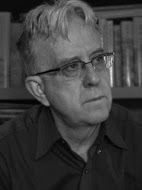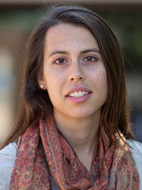Tag Archives: Plunz
News
Virtual Forum: Richard Plunz and Dana Boyer discuss Urban Agriculture and Food Systems
Join us Wednesday, 4/12, for a discussion on: Urban Agriculture and  Food Systems, Pt. 2:
Food Systems, Pt. 2:
Led by: Prof. Richard Plunz (Columbia University) Discussing: The Food System in New York City &
Dana Boyer (PhD, University of  Minnesota) Discussing: What is the Contribution of City Actions on Environmental Impacts on Urban Food Systems?
Minnesota) Discussing: What is the Contribution of City Actions on Environmental Impacts on Urban Food Systems?
Wednesday April 12, 11:15 to 12:30 PM Central
To view or join the discussion on Friday: Join Here, Access Code: 383-419-437.
These lectures and discussions are part of a course offered by the MSSTEP Program and the Sustainable Healthy Cities Network, Infrastructure Transformations for Sustainable Healthy Cities: Design and Policy.
News
Columbia Students and Faculty Complete First Detroit Collaboration

Written by Kirk Finkel and Richard Plunz, Columbia University Graduate School of Architecture, Planning and Preservation
The Columbia University Urban Ecology Studio is an advanced design course for students in architecture, engineering, and urban planning, which focuses on urban development and its social and ecological impacts. The Fall Semester 2015 Studio worked in Detroit addressing next generation infrastructural issues within the EHL (Environmental Sustainability, Health, Livability) framework of the Sustainable Healthy Cities Research Network. The first stage of this collaboration was completed with presentations of six urban design projects at Columbia University in December 2015.
The studio comprised six Masters-level architectural students and eight Senior Undergraduate, Masters and PhD engineering students, who formed into interdisciplinary design teams of two to three students each. In October, the studio visited Detroit and met with its local partner; the Detroit Collaborative Design Center (DCDC), alongside students and faculty from the University of Michigan’s Urban Design Studio. The Columbia University cohort then returned to New York and began to dissect their on-site experiences and adapt the research ideas that they had initially developed. Over the course of the next few months, each of the six teams honed their topics and presented their work to a rotating internal and external jury through desk critiques, pin-up discussions, and formal reviews. Faculty from the engineering and architecture schools met together several times weekly with the students to facilitate discussion and support the maturing of their proposals.
Building off of Detroit Collaborative Design Center proposal for day lighting the Bloody Run Creek watershed, each interdisciplinary team of students explored strategies and catalysts for new growth in Detroit. Students adopted site-specific and program-driven designs, which were required to resonate at both a local and city-wide scale. An in-depth examination of growth was derived from a past-to-present study of the efficiencies and inefficiencies of the Detroit city-grid, as well as the existing regional fabric. A major challenge for each team was developing a mature and comprehensive proposal, which observed feasibility, scope and phasing in an implementable manner, together with cost-effectiveness and a host of other related challenges. The studio produced six final design proposals, which included proposals for localized stormwater management through soil-aeration and smart planting in vacant lots, a new Detroit-based flower industry in an abandoned auto-plant, a new technology campus of driverless cars and sustainably harvested energy, a new connected multi-modal transportation system for neighborhood development, an extension of existing public markets that focused on local food production and included energy generating bio-digesters for food waste, and an innovative strategy for cost-effective sustainable construction using blighted materials.
The studio’s architectural and engineering partnership generated both responsive and innovative design schemes, which have tremendous prospective value for the City of Detroit. As a whole, the studio has compiled a family of proposals that have the potential to serve as part of a strategic masterplan. In particular, the studio designs explore forms for new distributed infrastructure within the context of a city with diminishing traditional infrastructure needs; and the possibilities for new approaches to infrastructure to foster economic development and social cohesion.
The Urban Ecology Studio is co-taught each year by SRN faculty Patricia Culligan and Richard Plunz. In this studio they were joined by architect Kirk Finkel, landscape architect and Assistant Research Scientist Amy Motzny, and civil engineer and Earth Institute Post-Doctoral Research Scholar Robert Elliott. Professors Culligan and Plunz are currently leading efforts to explore the role of green infrastructure in urban stormwater management and community development in New York City’s Bronx River Sewershed. They decided to focus this year’s Studio on stormwater management and community development ideas for Detroit, in order to begin the integration of new ideas and strategies for distributed infrastructure systems across the SRN testbeds in New York City and Detroit.
News
The Big City Scaled Down for Sustainability
Columbia To Co-Lead $12 Million Livable Cities Research Project.
Two-thirds of people on the planet will live in cities by 2050 but few cities are prepared for the coming population boom. A $12 million research project sponsored by the National Science Foundation (NSF) will explore a new model for urban infrastructure—the roads, pipes and grids that move around people, food, water and energy—to make cities cleaner, healthier and more enjoyable places to live.
A consortium of cities, companies and universities, led by University of Minnesota, Columbia University and Georgia Institute of Technology, will form a Sustainability Research Network to carry out the research, titled “Integrated Urban Infrastructure Solutions for Environmentally Sustainable, Healthy, and Livable Cities.” By 2045, cities will be home to 6 billion people, the United Nations estimates, creating an unprecedented demand for food, water, energy, transportation and housing.
In the past, governments built massive infrastructure projects to meet the public’s needs—interstate highways, regional power plants and centralized sewage treatment systems. But concerns about climate change and the hefty costs of such monumental projects, in dollars, pollution, efficiency and vulnerability during natural disasters, have caused many to reconsider.
The city of the future may well favor small, local and decentralized solutions—what some planners call “distributed” infrastructure. Think roads geared towards bicycles instead of cars; Houses powered by a neighborhood solar grid instead of a distant power plant; Food grown on rooftops instead of shipped cross-country; and waste composted locally rather than piped to a sewage treatment plant.
By studying the infrastructure of cities in the United States and India, the Sustainability Research Network will identify the best mix of local and regional systems to meet city dwellers’ needs. The team will also explore the community attitudes and public policies that allow cities to evolve and adapt. Over the next four years, it will develop a framework for change based on new technologies and trends already underway, including district energy systems, community solar energy, light-rail, bike share systems and urban farms.
The cities to be analyzed include, among others, New York, Minneapolis-St. Paul, Detroit and Atlanta, as well as cities in India with minimal infrastructure. The university researchers, in collaboration with their partners in the public, private and nonprofit sector, will focus on developing practical solutions that can be scaled and immediately put into action.
In New York City, Columbia has worked with City Hall, property owners and local community groups to measure the impact of city initiatives to green the urban landscape by planting more trees and vegetation, including on rooftops and roadways. Trees and plants absorb rain and snow, reducing the amount of stormwater runoff that sewage treatment plants need to process. They also cool the air, helping to bring down temperatures on hot days. In addition to measuring the benefits of green infrastructure, Columbia researchers are studying the psychological factors that lead communities to care for city-planted trees and vegetation in their midst, protecting the public’s investment.
The research is still in progress, but initial results highlight the importance of involving neighbors in the stewardship of green infrastructure. Tree-pits, for example, can absorb more stormwater if soils remain loose and uncompacted. Planting flowers in the tree-pits and putting up guards have proven effective at keeping foot traffic away.
Columbia’s role in the Sustainability Research Network will be to look at the potential for designated cities to scale various sustainability solutions, be it planting rooftop farms or rewiring buildings for solar. How much capacity is there, and how big are the benefits? The Columbia researchers involved are: Patricia Culligan, a civil engineer who is deputy director of Columbia’s Data Science Institute; Upmanu Lall, a civil engineer who heads the Columbia Water Center; Vijay Modi, a mechanical engineer who heads Columbia’s Sustainable Engineering Lab; Ben Orlove, an anthropologist who heads Columbia’s Center for Research on Environmental Decisions; and Richard Plunz, an architect who heads Columbia’s Urban Design Lab.
The shift to a city with local and decentralized services will require technology—sensors to pull in data from solar panels, weather stations and so on—and systems to analyze it, make decisions and coordinate with other systems. “The internet-of-things, where sensors talk to sensors, and make decisions without any human involvement, is going to be key for the city of the future,” said Culligan. “Sensors on green roofs will tell sensors controlling irrigation when plants are thirsty and need to be watered.”
“When it rains, green roof sensors will tell stormwater pipe sensors how much rainfall has left the rooftop so flows can be redirected to prevent flooding,” she added. “Big data and data science will be central to all of this.”
The Sustainability Research Network’s “Integrated Urban Infrastructure Solutions for Environmentally Sustainable, Healthy, and Livable Cities” project includes researchers in academia, industry and policy organizations that work with more than 29,000 cities in the U.S. and globally. They are: the University of Texas at Austin, Florida State University, University of Michigan, Colorado State University, Ohio State University and Indian Institute of Technology-Madras; Ecolab, Xcel Energy, ICF International; and ICLEI – Local Governments for Sustainability, National League of Cities and the International City/County Management Association.
Directing the project is Anu Ramaswami, who heads the University of Minnesota’s Science, Technology & Environmental Policy Program at the Humphrey School. Her co-investigators are Culligan, at Columbia, and Amistead Russell, an environmental engineer at Georgia Tech who specializes in air quality and health.
Please see Sustainable Healthy Cities for a full list of project partners.
— Kim Martineau
This article was originally posted by Columbia University.




